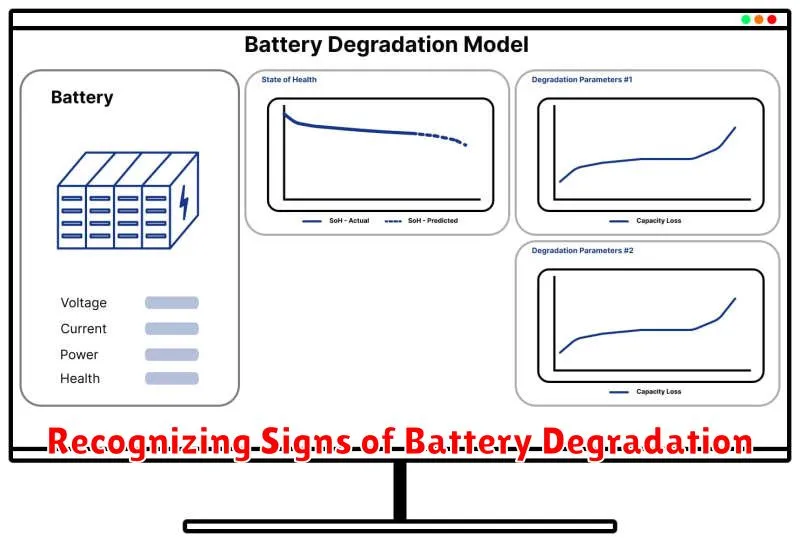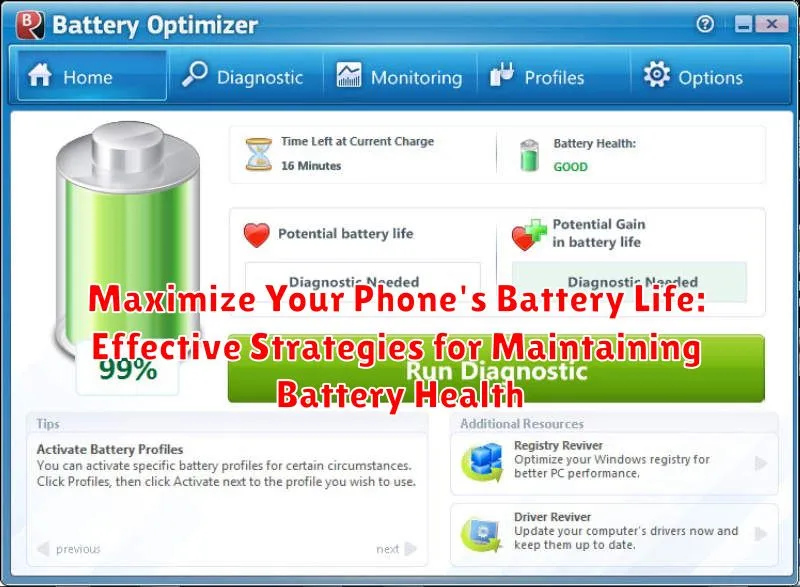Is your phone constantly teetering on the brink of a dead battery? Do you find yourself desperately searching for a charger throughout the day? In today’s fast-paced world, our smartphones are essential tools for communication, work, and entertainment, and a dying battery can be a significant inconvenience. This article will explore effective strategies to maximize your phone’s battery life and maintain its battery health for the long term. Learn how to get the most out of every charge and keep your phone powered up when you need it most. We’ll cover everything from optimizing settings and managing apps to understanding charging habits and battery health indicators.
Maximizing your phone’s battery life isn’t just about making it through the day; it’s also about preserving the battery health so your phone lasts for years to come. Many factors contribute to battery drain, including screen brightness, app usage, background processes, and network connectivity. By understanding these factors and implementing the strategies outlined in this article, you can significantly extend your battery life and avoid the frustration of a low battery. We’ll provide practical tips and actionable advice to help you take control of your phone’s battery life and maintain optimal battery health.
Understanding Battery Health and Its Importance
Battery health is a critical aspect of smartphone performance. It represents the battery’s ability to hold a charge compared to when it was new. A healthy battery powers your device reliably, ensuring you can use it throughout the day without constantly searching for a charger.
Over time, all batteries degrade. This is a natural chemical process. However, the rate of degradation can be influenced by how you use and care for your battery. A degraded battery will hold less charge, meaning shorter usage time between charges. In extreme cases, a severely degraded battery might cause unexpected shutdowns or performance issues.
Understanding your battery’s health is the first step towards maximizing its lifespan. Modern smartphones often provide tools to check battery health status, offering insights into its current capacity. By monitoring this and adopting good charging habits, you can significantly extend your battery’s usable life.
Optimizing Battery Usage with System Settings
Your phone’s system settings offer a range of options to significantly improve battery life. Adjusting these settings can help you conserve power without dramatically impacting functionality.
Screen Brightness and Timeout
Screen brightness is a major battery drain. Lowering the brightness, even slightly, can make a noticeable difference. Enable auto-brightness to dynamically adjust the screen based on ambient light. Additionally, reducing the screen timeout duration will prevent the screen from staying on unnecessarily.
Connectivity Features
When not in use, disable power-hungry features like Wi-Fi, Bluetooth, and location services. These constantly search for signals and consume significant power. Consider using Airplane Mode in areas with weak or no signal, as your phone will continually search for a connection, depleting the battery faster.
Haptic Feedback and Vibrations
While providing tactile feedback, haptic feedback and vibration consume battery. Reducing or disabling these features, especially for keyboard presses and notifications, can save power.
Managing Apps and Background Processes
Apps and background processes significantly impact battery life. Regularly reviewing and managing these can greatly extend the time between charges.
Identify Battery-Draining Apps: Your phone’s settings usually offer insights into each app’s battery consumption. Use this feature to pinpoint power-hungry apps.
Limit Background Activity: Restrict background activity for apps you don’t use frequently. This prevents them from consuming power even when not actively in use.
Close Unused Apps: Develop the habit of closing apps you’re not actively using. This prevents them from running in the background and draining your battery.
Uninstall Unnecessary Apps: If you have apps installed that you rarely or never use, consider uninstalling them. This frees up storage space and reduces potential background activity.
Charging Best Practices: How to Charge Your Phone Correctly
Charging your phone correctly can significantly extend its battery lifespan. Avoid completely depleting the battery before plugging it in. Partial charging is actually better for lithium-ion batteries than deep discharges.
Aim to keep your phone’s battery level between 20% and 80% for optimal longevity. While it’s not always practical, consistently charging within this range minimizes stress on the battery.
Use the charger that came with your phone, or a reputable alternative with compatible specifications. Using an incorrect charger can lead to inefficient charging or even damage the battery.
Once your phone reaches 100%, unplug it. Leaving it plugged in continuously, especially overnight, can contribute to long-term battery degradation through a process called “trickle charging.”
Avoid charging your phone in extremely hot or cold environments, as extreme temperatures can negatively impact charging efficiency and overall battery health. Room temperature is ideal.
Avoiding Extreme Temperatures
Temperature plays a significant role in battery health and longevity. Both extreme heat and extreme cold can negatively impact your phone’s battery performance and lifespan.
High temperatures can cause irreversible damage to the battery’s chemical composition, leading to reduced capacity and a shorter overall lifespan. Avoid leaving your phone in direct sunlight, especially in hot cars or on dashboards. Do not leave it in enclosed spaces that can trap heat.
Low temperatures, while not as damaging as heat, can temporarily reduce battery performance. You might notice your phone discharging faster in freezing weather. Try to keep your phone in an inside pocket close to your body to help maintain a more moderate temperature.
Ideally, your phone should operate within a moderate temperature range for optimal battery performance. Consult your phone’s user manual for the recommended operating temperature range.
Battery Health Myths Debunked

Several myths surround phone battery health, often leading to practices that offer little benefit or even harm battery longevity. Let’s debunk some common misconceptions:
Myth 1: Closing Background Apps Saves Significant Battery
While some apps consume power in the background, modern operating systems manage these processes effectively. Force-closing apps constantly can actually use more battery due to the resources required to relaunch them.
Myth 2: You Must Fully Discharge Your Battery Before Recharging
This was true for older nickel-based batteries. Modern lithium-ion batteries do not suffer from the “memory effect.” Partial charging is perfectly acceptable and even recommended.
Myth 3: Leaving Your Phone Plugged in Overnight Damages the Battery
Once your phone reaches 100% charge, the charging circuitry stops delivering power. Overcharging is not a concern with modern smartphones. However, consistently exposing your battery to high temperatures (such as leaving it under a pillow while charging) can degrade its lifespan over time.
Effective Ways to Extend Battery Lifespan
Optimize Display Settings: Lowering screen brightness significantly impacts battery life. Enable auto-brightness to dynamically adjust to lighting conditions. Shortening the screen timeout duration also helps conserve power.
Manage Connectivity: Turn off Wi-Fi, Bluetooth, and Location Services when not in use. These features constantly search for signals, consuming battery power. Airplane mode is a powerful tool for preserving battery, especially in areas with weak or no signal.
Control Background Activity: Limit background app refresh. Many apps consume power even when not actively used. Restricting this activity can significantly improve battery life.
Temperature Management: Avoid exposing your phone to extreme temperatures, both hot and cold. Extreme temperatures can degrade battery performance and lifespan.
Optimized Charging Practices: Avoid consistently charging to 100% or letting the battery completely drain. Partial charging cycles are gentler on the battery. Utilize your phone’s optimized charging feature if available.
Recognizing Signs of Battery Degradation

Over time, all batteries degrade, losing their ability to hold a charge effectively. Recognizing the signs of this degradation can help you manage your phone’s performance and determine when a replacement is necessary.
A rapid decrease in battery percentage is a primary indicator. If you find your phone dropping from 50% to 20% much faster than it used to, even with similar usage, it suggests battery degradation.
Unexpected shutdowns, especially when the battery indicator shows a reasonable charge remaining (e.g., 20% or higher), can also point to a failing battery. The battery may no longer be capable of providing consistent power, leading to these abrupt shutdowns.
Overheating, even with moderate use, can be a sign of a degraded battery. As batteries age, internal resistance increases, generating more heat.
Longer charging times than usual, despite using the same charger, can also indicate battery degradation. A failing battery may take longer to reach full capacity.
Finally, physically check your phone for any unusual bulging or swelling. This is a serious safety concern and indicates immediate need for battery replacement.
When to Consider Battery Replacement
Knowing when to replace your phone’s battery is crucial for maintaining optimal device performance. Several key indicators suggest it’s time to consider a new battery.
Significant Decrease in Battery Life
If you find yourself constantly needing to charge your phone throughout the day, even with minimal usage, it’s a strong sign of battery degradation. A noticeably shorter battery life compared to when the phone was new warrants investigation.
Unexpected Shutdowns
Does your phone abruptly shut down, even when the battery indicator shows a decent charge remaining? This erratic behavior can indicate a failing battery and requires attention.
Overheating
Excessive heat generation, especially during normal usage, can be a symptom of a compromised battery. While phones generate some heat, unusual warmth should be addressed.
Slow Performance
In some cases, a deteriorating battery can strain the phone’s processor, leading to sluggish performance and app crashes. If your phone is noticeably slower, a new battery might be the solution.
Battery Swelling
A physically swollen or bulging battery is a critical warning sign. This indicates a serious safety hazard and requires immediate battery replacement. Do not attempt to use the phone if you observe any swelling.

